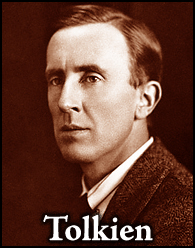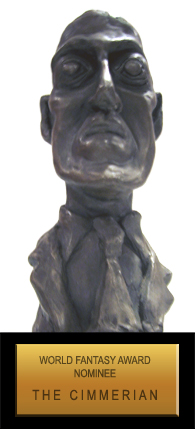Sunday, July 12, 2009
posted by Leo Grin
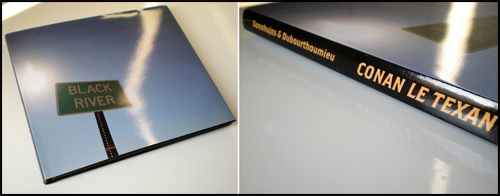
French Howard fan Simon Sanahujas writes in:
Last year, in February, I made a road trip in Texas with a photographer ( Gwenn Dubourthoumieu). Our purpose was to follow Howard’s trail and try to find the landscapes and places which inspired him for Conan and the Hyborian Age. Last year we published in France an art book about that, called Conan le Texan, and now it’s translated and available in English. It’s eighty pages with more than sixty color pictures.
Here is the page on the publisher’s website. And the link where it can be ordered.
And here is the entire design from the French edition (very large page, you’ll have to scroll it on the right).
Best Regards,
Simon Sanahujas
The book looks quite nice, with some very professional pictures, layout, and design. If you are interested in Texas from a Howardian perspective, check it out.
Friday, July 10, 2009
posted by Steve Trout

M. John Harrison’s The Pastel City has long been one of my favorite books. Recently I read it again for the third or fourth time. It is set in a desolate future Earth, where large tracks of land are given over to polluted wastes and deserts of rust. There are ruined cities and ruined machines left over from the civilizations of the past, the Afternoon Cultures.
Across this backdrop strides tegeus-Cromis, a black-clad swordsman supreme, something of a somber Solomon Kane figure, though he is a poet rather than a Puritan. He and his fellow Methven, a knightly order that served the old king, are caught up in a new war involving the new queen, Northmen, and deadly brain-harvesting machines dug up from the past. The plot is fairly slight, and has a deus ex machine taint to the conclusion, but what stands out is the Future Gothic moodiness, the characters, and some great dialog.
Tomb the Dwarf, who is good with his hands, finds an immense exoskeleton and repairs it — strapped into it, he hoists his energy-bladed axe and shouts “I’ll shorten them!”
Tegues-Cromis, in despair, facing enemies who outnumber him vastly, pleas “Come and kill me. Just come and try.”
If you’re not familiar with this book, you should try it out. Be aware the sequels are disappointing.
Wednesday, July 8, 2009
posted by Deuce Richardson
“Bullfighting is indeed a reversion to Roman amphitheater days. I have an idea that the Mediterranean peoples have practiced it in some form or other every since the days of Crete, where it flourished, according to vases and the like.”
Robert E. Howard to HP Lovecraft, ca. January 1931

The bulls are running again in Pamplona, once the heart of medieval Vasconia, and what is now known as the Basque Country. The Feast of St. Fermin is an ancient one, with records attesting the encierro going back at least eight centuries. There are some indications that its roots extend much further. (Continue reading this post)
Sunday, July 5, 2009
posted by Leo Grin
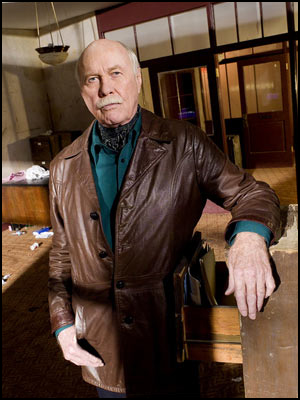
In all the hoopla surrounding the more famous celebrity deaths of late, the death of Harve Presnell at 75 has gone largely unnoticed. Among many other performances during a long career, he ably played Dr. Howard in the biographical REH film The Whole Wide World, which also starring Rene Zellweger and Vincent D’Onofrio.
Presnell’s obit is here.

Friday, July 3, 2009
posted by Steve Trout

I’ve never been much of a Clive Barker fan, so I never saw “Lord of Illusions” when it came out. It’s been playing on our cable though, so we gave it a try. Despite Leonard Maltin’s half-hearted endorsement (“Intelligent thriller [. . .] better than the usual genre fare, but it’s thinly plotted, and condescends slightly to its audience” it was entertaining enough and I never saw any condescension.
It stars “Quantum Jump”-er and “Star Trek Enterprise” captain Scott Bakula as a out-of-his league gumshoe and a very hot, young Famke Janssen (Jean Grey of “X-Men” ) as the damsel in distress. The plot, which involves cults and real magic, has several Howardian elements, which makes me wonder if Barker is a fan.
At the start, two cultists murder a mystic, and one of them has filed teeth (not that that necessarily owes anything to Howard’s “Shadows in Zamboula” — but the other one is the creepier. This is a prelude to the main plot, which involves the PI being hired to check into whatever problem is haunting an illusionist, who then apparently dies in a stage accident. He has been hired by the sultry wife/widow whom he promptly bangs. What the illusionist feared is a man who has been dead for over a decade –a man who taught him that magic was real. In a very creepy sequence with echoes of Acheron, this dead sorcerer is brought back to life by his faithful cult.
For our P.I. hero, who seems not too far removed from Howard’s River Street, handgun fire is a hearty incantation, but in the end, it is the borrowed power of a formerly subordinate mage (the illusionist, not actually dead after all, but now getting there) who tried and failed to stem the black master’s evil — as in “People of the Black Circle” — that lets our braver and more determined hero throw the sorcerer back down to hell, in a sequence that relies on flashy special effects to the detriment of good storytelling. Still and all, a very interesting film.
Wednesday, July 1, 2009
posted by Deuce Richardson
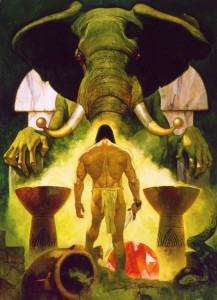
The tortured, transcosmic being that the youthful Conan encounters in “The Tower of the Elephant” seems to have a bit of an identity problem. Said entity refers to himself as “Yogah” once and as “Yag-kosha” twice. Robert E. Howard, in his role as omnipotent narrator, refers to the last exile of green Yag as “Yag-kosha, or Yogah” and as “Yag-kosha and Yogah.”
What to make of this? How should Yara’s ultra-telluric thrall be called? By what name did that pathetic entity refer to himself, in his innermost thoughts? Short of finding a lost letter relating to the matter, or the discovery of more “Hyborian Age Notes” of some sort, nothing absolutely definitive can be stated. However, I think something can definitely be speculated. (Continue reading this post)
Tuesday, June 30, 2009
posted by Leo Grin

That’s the deal going on at Subterranean Press through July 3. If you’re interested, check it out (hat tip: Jack Jones).
Sunday, June 28, 2009
posted by Leo Grin
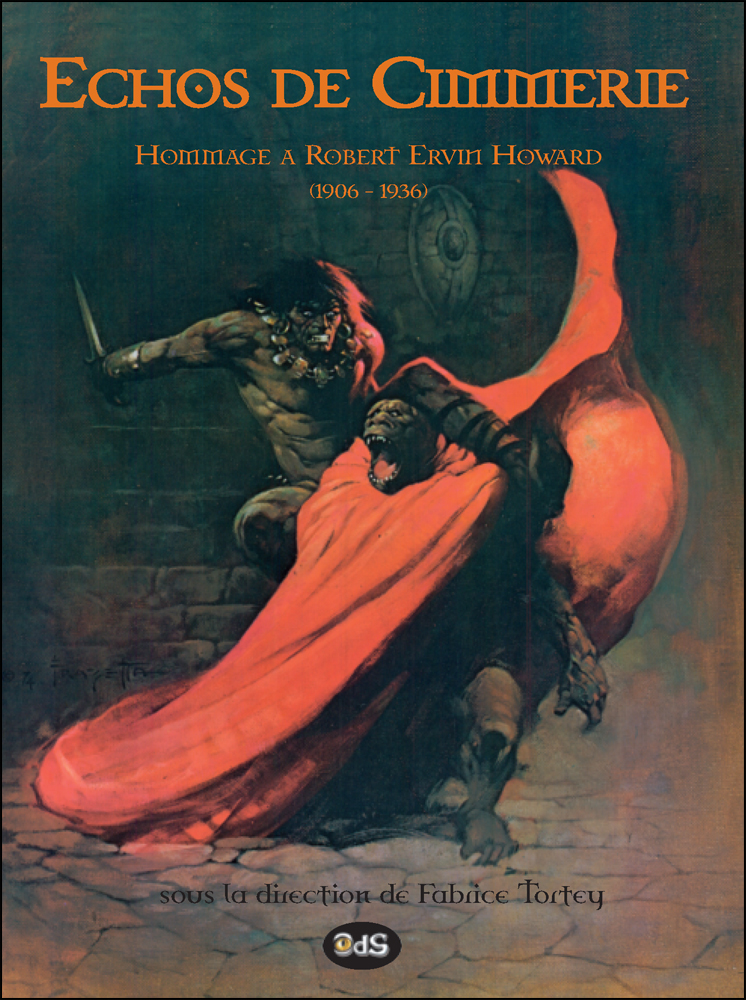 At long last, Fabrice Tortey reports that his large and meaty French tome about Robert E. Howard, Échos de Cimmérie, is at the printer and will be available shortly. It promises to be filled with interesting essays about Howard from both French and American writers. Last year Donald Sidney-Fryer read the galleys in the original French and reviewed the book in TC V5n6. I also published some of the contents of the book, translated into English, in TC V5n2.
At long last, Fabrice Tortey reports that his large and meaty French tome about Robert E. Howard, Échos de Cimmérie, is at the printer and will be available shortly. It promises to be filled with interesting essays about Howard from both French and American writers. Last year Donald Sidney-Fryer read the galleys in the original French and reviewed the book in TC V5n6. I also published some of the contents of the book, translated into English, in TC V5n2.
Information on ordering the book, and a breakdown of the contents, can be found here.
UPDATE: The book is now available at Amazon here.
Friday, June 26, 2009
posted by Steve Trout
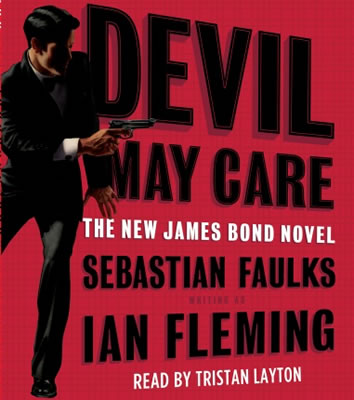
Robert E. Howard fans usually have a strong opinion regarding the practices of pastiching and “posthumous collaboration”, which has been archly described as a work by two authors whose positions should be reversed.
I remember when the family of the late V.C. Andrews hired a ghostwriter, Andrew Neiderman, whose name appeared nowhere in the books, to continue her works under her name. I thought that was horribly misleading of them. You had to check inside to find it wasn’t actually her work. I thought that the Howard pastichers would have loved an arrangement like that.
But recently I saw something new in posthumous writing: Devil May Care by Sebastian Faulks writing as Ian Fleming. Now I get Stephen King writing as Richard Bachman, or Karl Wagner writing as Kent Allard, even, but “writing as Ian Fleming?” Don’t you have to be Ian Fleming to do that? I know if I ever saw a book by Leonard Carpenter or some other twerp “writing as Robert E. Howard” I’d be tempted to set fire to the things right in the bookstore. It’s amazing what’s for sale these days.
More on the book here.
Wednesday, June 24, 2009
posted by Deuce Richardson
 It was almost two years ago to the day that I first learned of the (then) forthcoming audiobook dedicated to The Children of Húrin. Despite the heads-up from Mr. Tompkins, it was only in the waning days of May 2009 that I finally acquired my own copy. Having some unforeseen time on my hands this last week, and an anniversary to commemorate, I sat back and gave a listen to Christopher Lee’s (and Christopher Tolkien’s) performance on the night of June 22, 2009.
It was almost two years ago to the day that I first learned of the (then) forthcoming audiobook dedicated to The Children of Húrin. Despite the heads-up from Mr. Tompkins, it was only in the waning days of May 2009 that I finally acquired my own copy. Having some unforeseen time on my hands this last week, and an anniversary to commemorate, I sat back and gave a listen to Christopher Lee’s (and Christopher Tolkien’s) performance on the night of June 22, 2009.
I purchased my copy of The Children of Húrin audiobook for twenty-five dollars and received it still in its cellophane coll, pristine as driven snow. HarperCollins cut no corners with this production. The eight compact discs are sturdily packaged in an attractive box (though, agreeing with others, I find the Alan Lee rendition of Túrin to be underwhelming). Nestled snugly within the box are two CD cases, each of which contain four compact discs. Within the first case is a booklet containing a complete table of contents pertaining to all eight discs. The booklet also presents plates by Alan Lee for the print edition. The second CD case contains an excellent reproduction of Christopher Tolkien’s map of Beleriand. The covers for both cases are derived from Alan Lee’s The Children of Húrin calendar, paintings not found in the print version. All in all, a sumptuous package. (Continue reading this post)

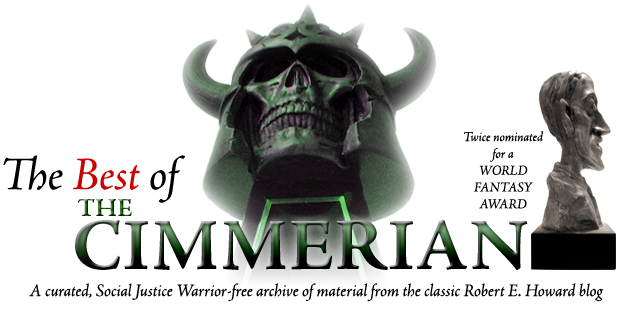









 It was almost
It was almost 